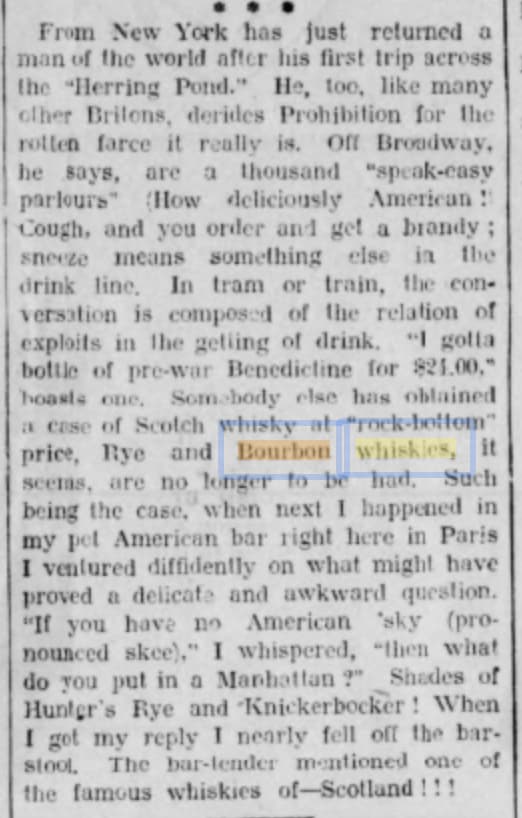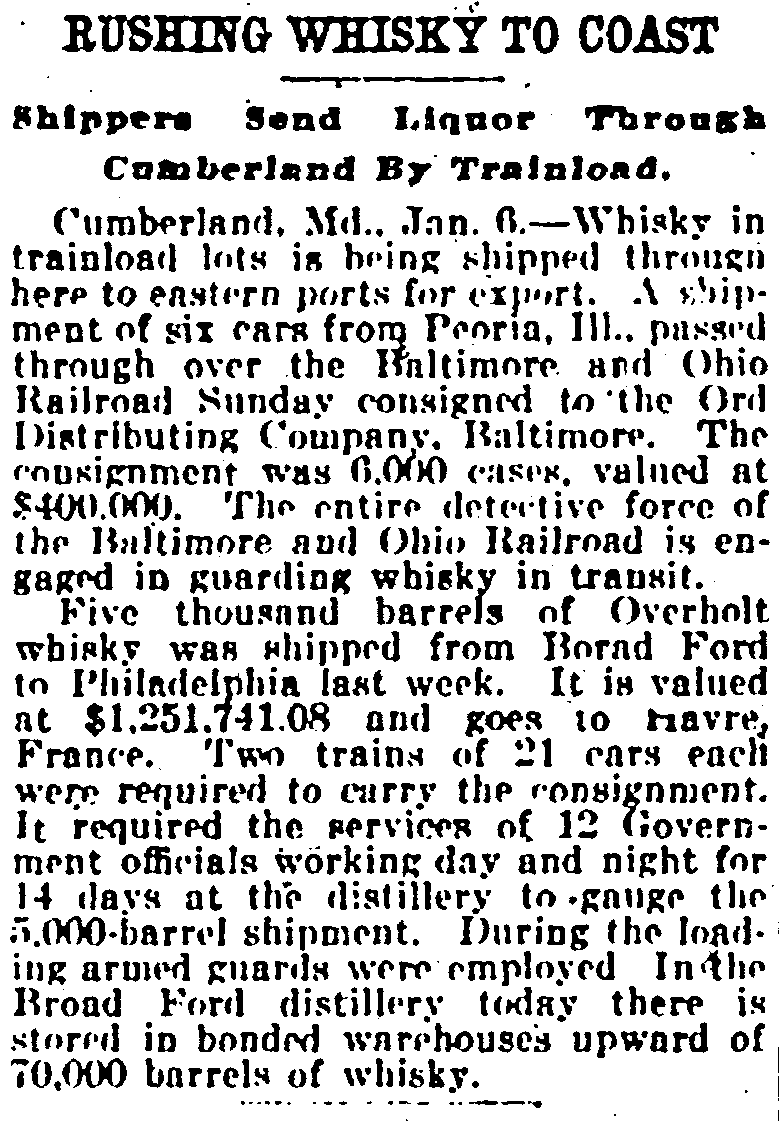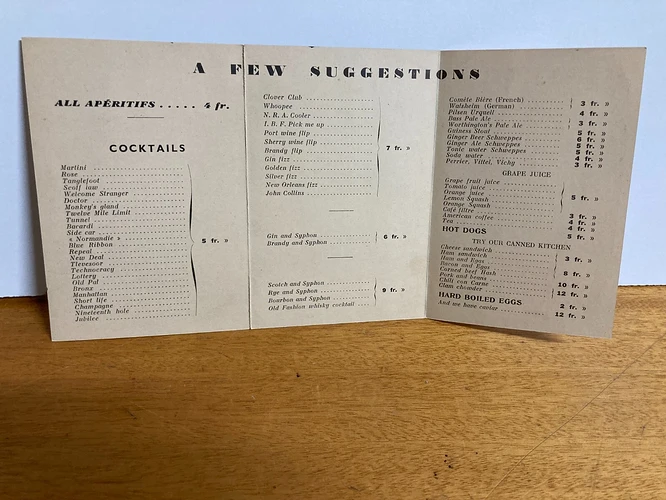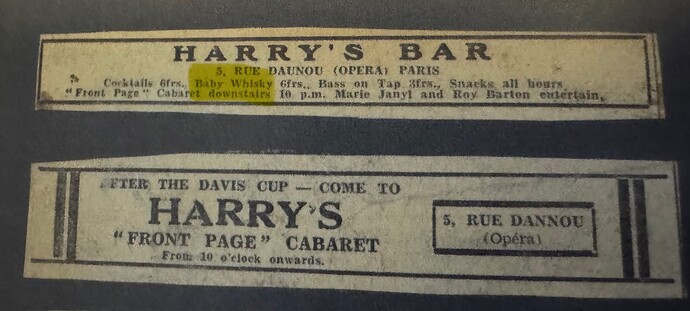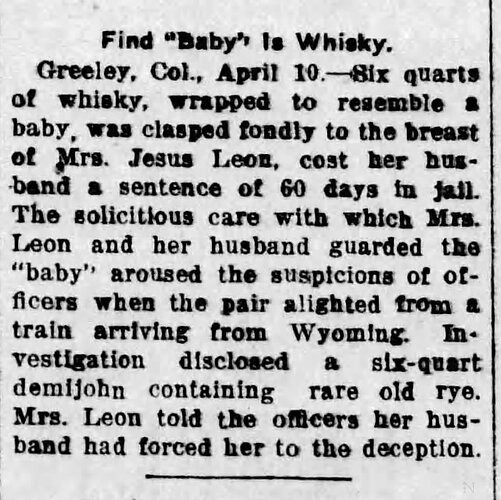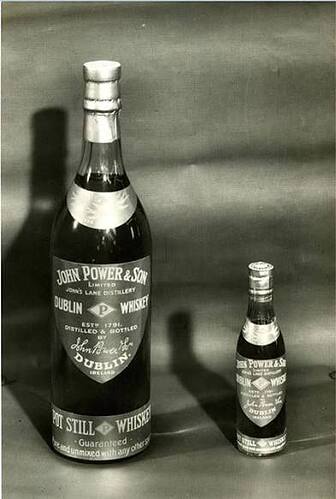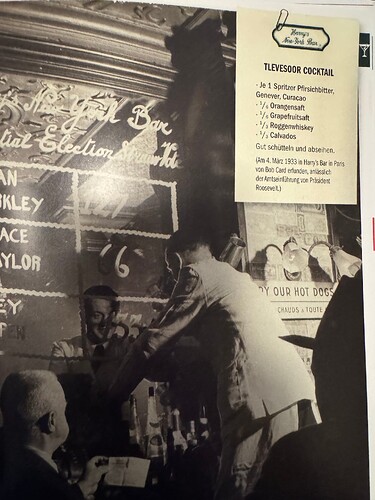I was musing today about the Boulevardier and it occurred to me that is was a Bourbon cocktail invented in France in the 1920s, a time when Bourbon was not being made in the US due to Prohibition, except for “medicinal” purposes. I wonder what Bourbon Erskine Gwynne and Harry’s New York Bar were using to make it, assuming they made it at all.
Mexico was producing a lot of corn whiskey that they were labeling as Bourbon during Prohibition (the protection came in 1964) just as Canada was labeling things as rye (despite being a small percentage of rye) for exporting and smuggling.
The other possibility is that if Bourbon were as popular then as Armagnac is here now, those bottles would last. But given the number of American ex-pats living there, that’s not too likely. French whisky distilling didn’t crop up until the 1980s.
The other possibility is that the Boulevardier was created before Prohibition, and the recipe traveled over to Paris to be recorded in the late 1920s.
This is an excellent question with many possible answers.
One of which is, if I have about 20 bottles of 40 degrees Cuban Rum and two cases of 47,3 Tanqueray at home, how many bottles of American whiskies did people like Harry McElhone stock up on in 1919?
Another thing to consider is: what happened to all the whisky available in the US in 1919? The European press widely reported at the time that about 3 million hectolitres of the stuff had been made available for export without export duties if it was out of the country by January 1920. That’s a lot of whiskey.
A third explanation, in the same line explored by @fredyarm, is that a lot of bourbon was from somewhere else: in the 20s it’s quite easy to find in the French press advertisements for bourbon exported from Canada. Hiram Walker is a big one, but also actual American brands such as Old Crow arrived via Montreal.
And finally, here’s a clipping that gives you a good idea of the situation in 1925 in some bars.
I fully expect some of the elite bars to have had stock of the real stuff. I wouldn’t be surprised if Harry’s was one but it’s impossible to know, I guess, what the first Boulevardier was mixed with.
No possibility of it being invented before Prohibition. Gwynne named it after his magazine, Boulevardier, which published in Paris between 1927 and 1932.
Great clip! Thanks, Francois. Also, Erskine Gwynne was an expatriate and Vanderbilt scion. My guess is he had a good stock of booze in his own possession.
This doesn’t really answer any questions, but I thought this 1921 article was interesting, because it seems to imply that French companies pushed back heavily on American whisky being brought into the country.
Heard on the name of the literary journal part. Recipes have a different trajectory than the drink names though, and Crosby Gaige made a living on that by renaming a lot of drinks for his Ladies’ Companion book in 1941 like renaming the classic Napoleon from the Savoy etc. and giving it the name that won out historically of Don’t Give Up the Ship (which is how Trader Vic called the recipe in 1947) which now first appears in his book. Also, I renamed a drink in May to fit the theme for a Planteray competition that has gained new life (a friend was served it this week in Chicago as bartender’s choice under the new name), but it was invented years before.
As a prequel to HHFizz’s article, here’s all that whiskey on its way out, from the Baltimore Sun in January, 1920:
I strongly suspect that most of it found its way back home via St. Pierre and Miquelon and other such offshore entrepôts.
I don’t know if the Hennessy Blockade directly affected people like Chicago saloonkeeper Al Tearney, who in late 1919 announced he was going to open a joint in Paris and was shipping over 1,000 barrels of whiskey to stock it, but his place didn’t seem to materialize, for whatever reason, and stocks of American whiskey in Paris seem to have been quite low. What there was was generally from Canada, as François and Fred noted–either genuine US stuff or Canadian facsimiles of American styles and even brands.
Interesting. Thank you, David.
There’s a few lead up articles to the one I posted. The ones I found most interesting were the apparent attempts to feel out distilling bourbon in Spain or France. I’m presuming none of them worked out.
Looking him up Al Tearny seems like a real character. Considering how much trouble he got into I’m not surprised the Paris scheme faltered.
I don’t know how reliable an eBay listing is, but this seems to a menu from Harry’s from 1930. It doesn’t name brands, but it seems to suggest bourbon was there by at least 1930. Comparing the pricing is interesting. (eBay Listing)
On a side note I looked through the book I have at home about Harry’s Bar. Doesn’t list any brands, but it does have a brief mention of selling “baby whisky”.
Does anyone know what this refers to in this context? Looking around the term seems to be used in many ways. My first thought is it referred to unaged whisky (and I found articles to support this), but I also saw it used to refer to a small bottle of whisky and a short pour.
One of the hard things about searching for an answer is that 99% of the articles that pop up are about giving babies whisky. Most are depressing though I did like this snippet about disguising whisky bottles as a baby.
The menu has to be from at least 1933, because of the NRA cooler (the National Recovery Administration was established in 1933).
A “baby Power’s” in Ireland, at least, was a small bottle of Power’s whiskey. I don’t know how widespread that usage was, but it’s a point of data anyway.
As for Tearny, I don’t know what part of “Chicago Alderman and saloon keeper” suggests that he might be a character.
And hot dogs for 5 francs!
Yeah… the hot dogs there aren’t 5 francs anymore… but also, think about it in relation to the cocktail price. Imagine paying the same $20 for a hot dog as a cocktail in NYC.
